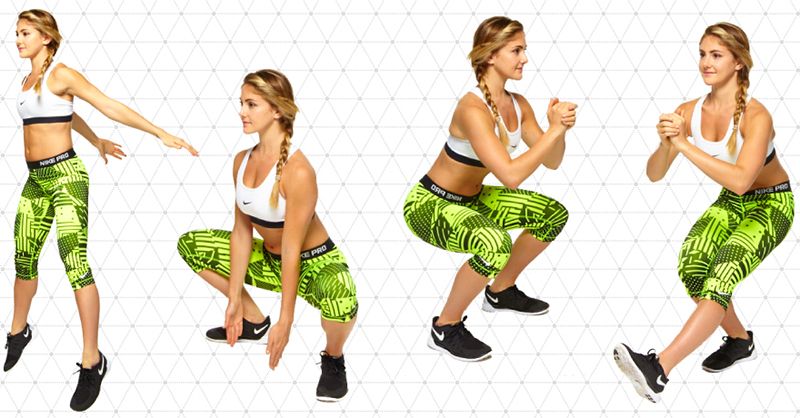The post Prevent Knee Surgery appeared first on MetaMed.
]]>We find that many people have been told, you’ll need an operation on your knee for it to improve, or ‘you have arthritis’ and there’s nothing we can do, ‘you need to get a knee replacement.'
In some cases yes surgery is the best option especially if your knee is causing you a lot of discomfort, instability and you’re unable to normal daily activities.
However, for those who have been told this before they’ve even tried conservative (non-invasive) treatment – hands-on treatment, manual therapy, exercise
Why is Your Body in Pain?
Much of the time if there
The pain can often be due to muscular tension (typically a dull ache), and yes you may have some changes in the structure of your
Treatment is Not Just Pain Relief
But pain relief is not the only benefit. If you are heading down the road of surgery, this means you’re going to have to rehab to get the most out of it!
Treatment is also an opportunity to help you slowly learn corrective exercises. Often pain can cause muscles to turn off, and it’s difficult to learn how to use them again!
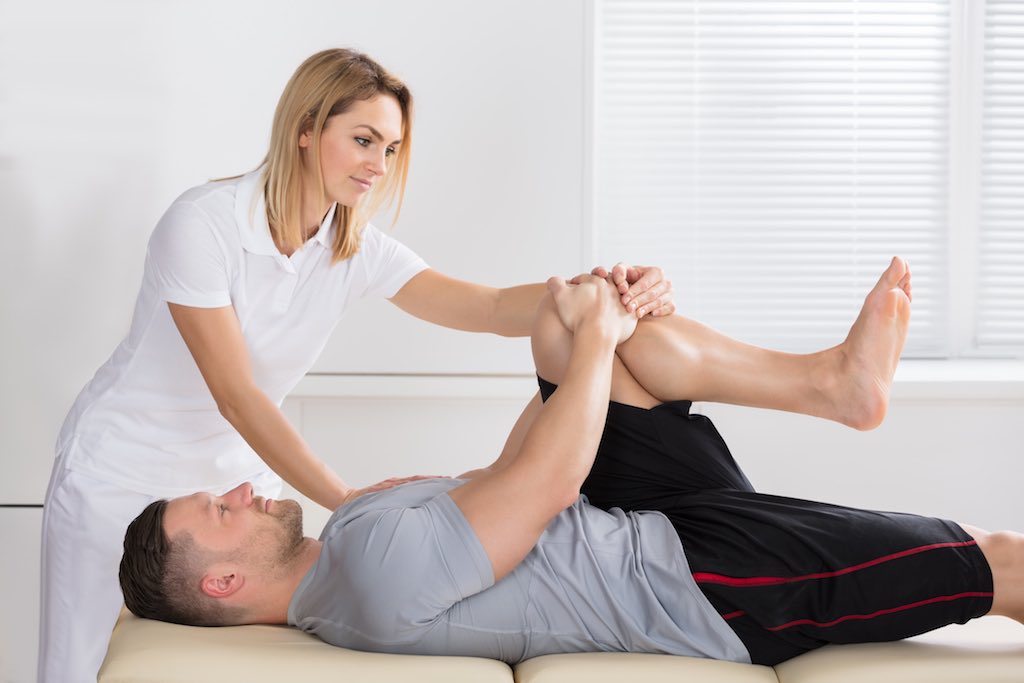
Prehab
By easing discomfort your body is more willing to engage muscles and strengthen them. We call this time prehab. It’s doing the work to get you in the best shape in prep for surgery so that you have optimal outcomes and get the most out of surgery,
Exercises to Get You Started
DOWNLOAD our basic knee exercises. *Please note that you may have some difficulty engaging these muscles if you have a chronic knee injury. This is where we can help with treatment. To help stimulate your muscles to make it easier to exercise them.
Benefits of Treatment Before Surgery
And, sometimes we find that people who so urgently needed surgery, actually don’t! They can reduce their pain killers, return to some level of activity and post-pone surgery for months or years.
So if you’ve been told you have a degenereative knee. Lets help either get you in shape for surgery or even prevent it needing to happen in the first place!
How Does Arthritis of the Knee Develop?
The progression towards arthritis is usually because of a previous trauma or injury causing a change in mechanics and load to your joint. In your knee it could be:
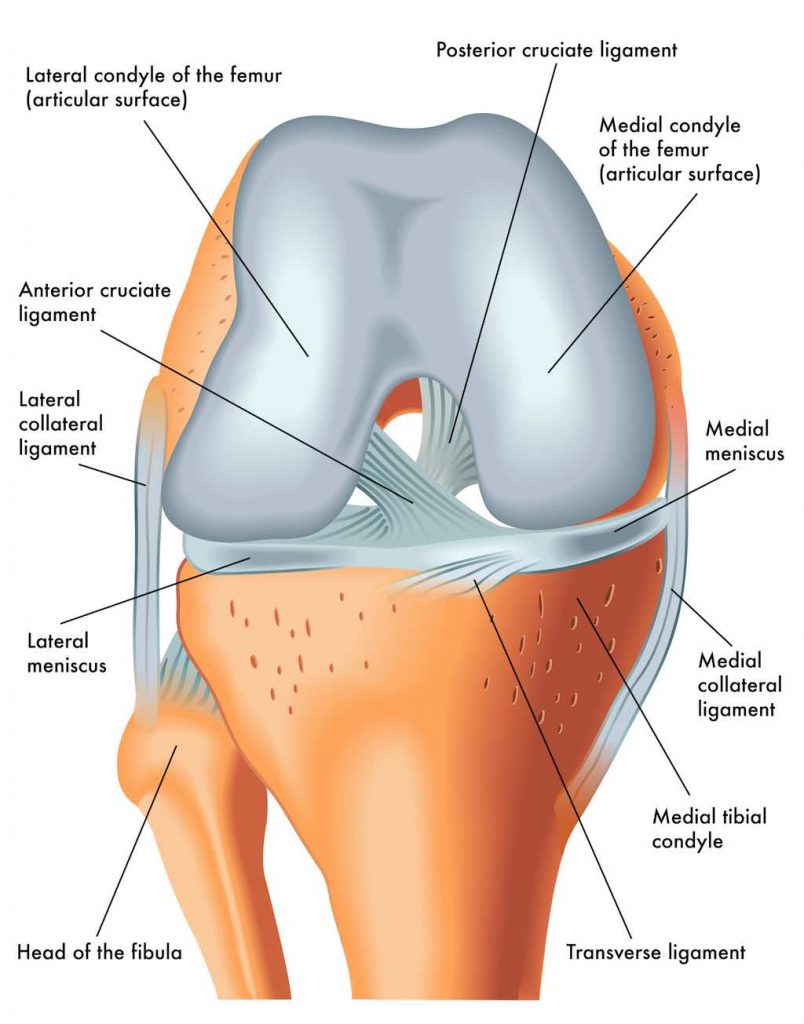
- Sprain knee – injury to the medial or lateral collateral ligaments
- Cartilage issue – meniscus tag or tear
- Internal ligament damage – the anterior cruciate ligament or posterior cruciate ligament
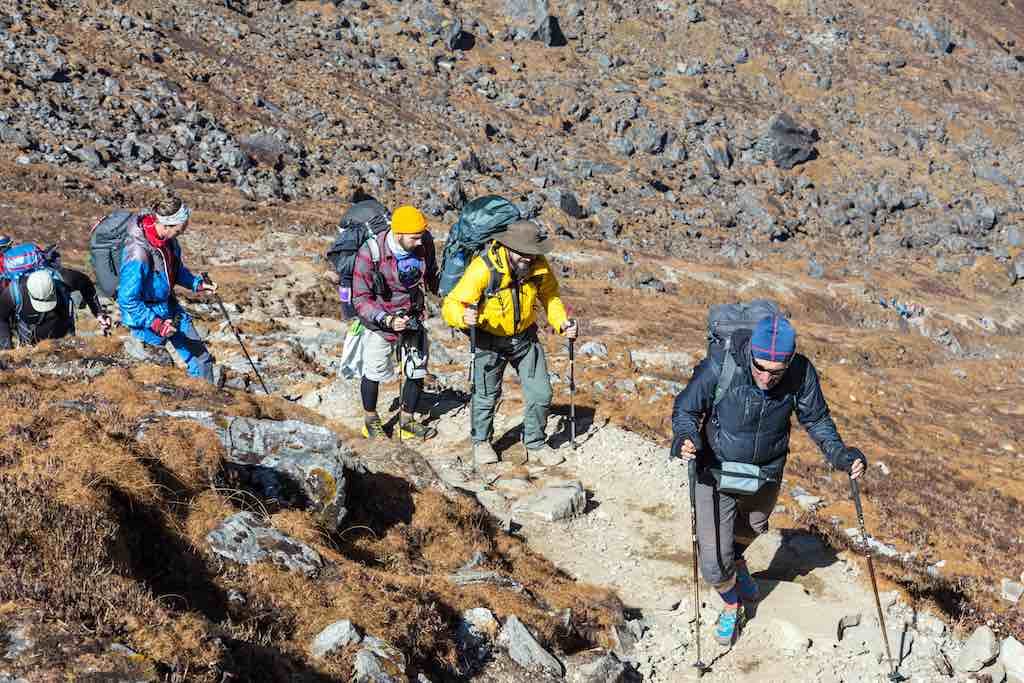
Address the Issue
As always, it’s important to address the underlying reasons that may have led to your condition in the first place: Existing weakness, biomechanical issues which need correcting etc…
Don’t get us wrong, we’re not against surgery at all. It is amazing what it can do. But don’t use it as your only ‘fix’.
The post Prevent Knee Surgery appeared first on MetaMed.
]]>The post Protect Your Knees – Ski Injury Prevention Explained appeared first on MetaMed.
]]>We’ve all been there. A day on the slopes ended too soon because of a strain or a ‘pulled muscle'. And we might say that we were unlucky. But you don't have to be one of the unfortunate ones if you prepare yourself for the slopes. Don’t let an injury end your fun too soon!
As you know, the knee joint take a bit of punishment when skiing. All that twisting, getting down low to carve into your turns and absorbing the impact on jumps and moguls takes its toll on the knee joint. The knee is under constant pressure thanks to your semi-squat position and the shock absorption function of your legs when heading downhill.

How Common Are Ski Injuries?
According to a New Zealand study by Costa-Scorse et al., 2017 between 2010 and 2014 the injury rate among skiers and snowboarders is roughly 3.3 per 1000 days skiing.
Knee injuries are the most common injury. Another study from 2005 found that injury to the knees accounts for 33% of all snow sports injuries. This number appears to have risen since then.
But skiers are twice as likely to do damage than snowboarders. Snowboarders are four times more likely to damage their wrists, however.
And as injuries have decreased worldwide, the number of injuries to the knee joint in snow sports participants has changed little (Paletta & Warren, 1994)
An interesting fact in the study is that skiing or snowboarding in soft snow is more likely to cause knee injury than skiing in ‘hard snow'. This could be one benefit of NZ snow conditions.
How to Avoid Ski Injuries
If you step foot on a slope, you are already at risk. Even walking with your skis in hand on snow or ice is risky. So what can you do to prevent injuries?
It’s important to point out that jumping onto a pair of skis after 8-9 months of sitting hunched over a desk is a recipe for disaster. If you don’t take regular exercise then you’ll not only have a short, tiring day on the slopes, you’ll also increase your chances of injury.
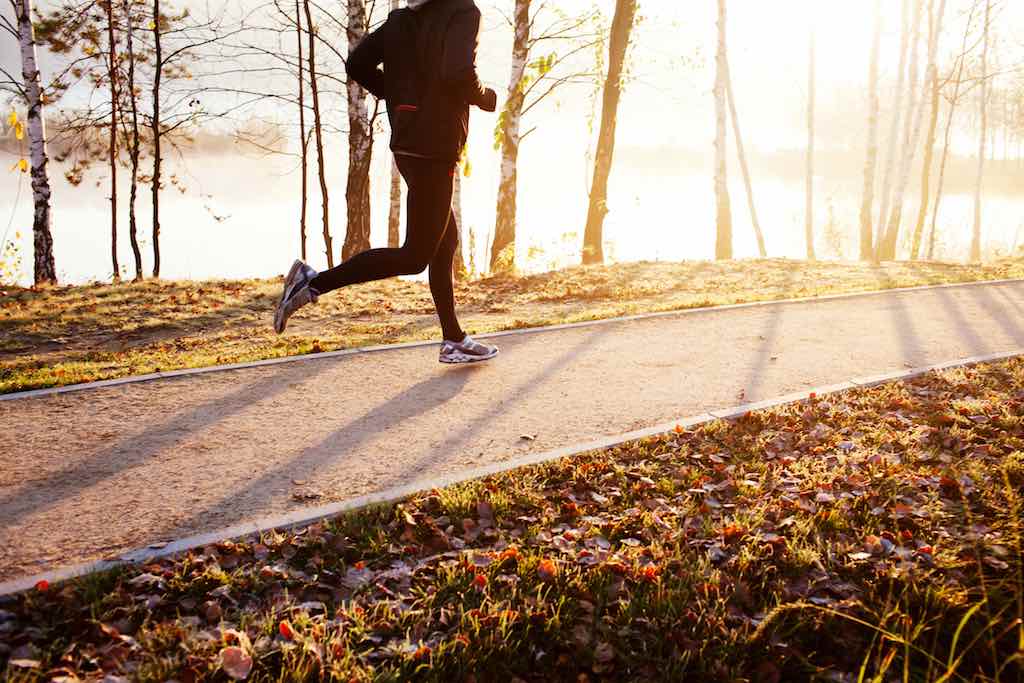
Cardio
Getting your general aerobic fitness up can help you endure and enjoy a longer day on the slopes. Aim for 30 minutes of exercise 4-5 times per week. A good gauge is a light – moderate sweat, a breathing where you can speak but can't sing. A brisk uphill walk, bike ride or swim is the easiest. Or join your local gym and work with a trainer to keep you motivated.
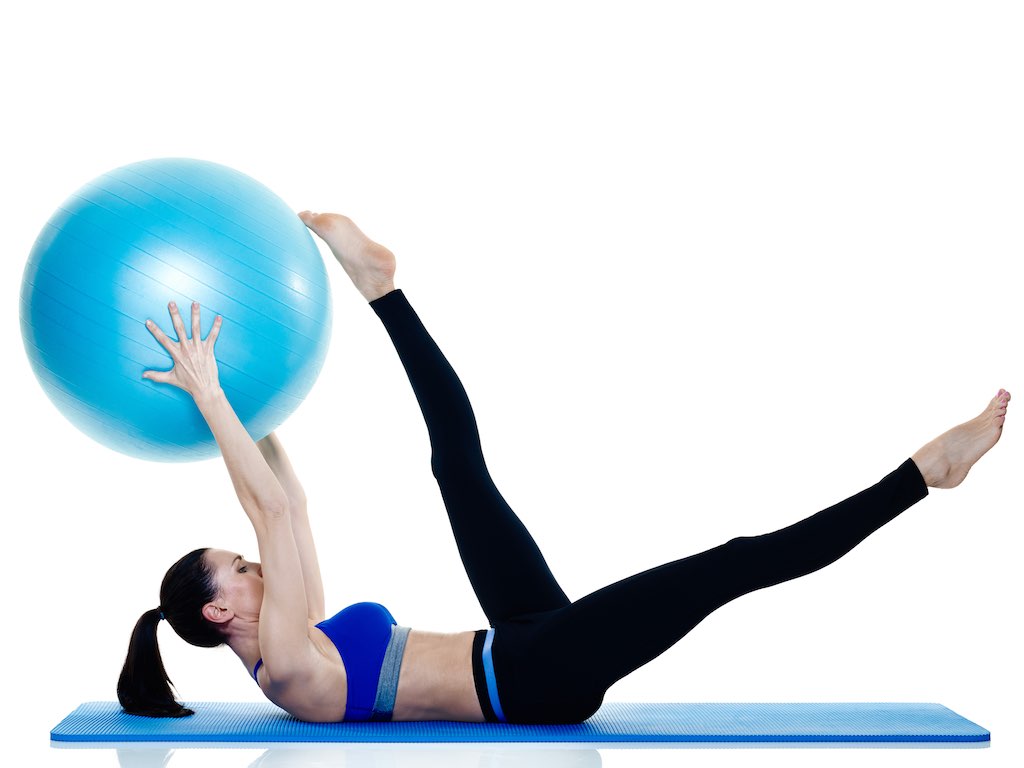
Stability
Having a good awareness of your core is one thing, but making sure it switches on at the right time is another. There are so many things to think about if you're learning to ski but having good core activation is key to making sure your arms and legs react the way you want and keep your back stable and strong. Pilates is a great start at finding your core muscles. A good instructor will make sure you're activating properly. It's important to understand that our core often gets worked with slow and steady movements, not more reps and hard work.
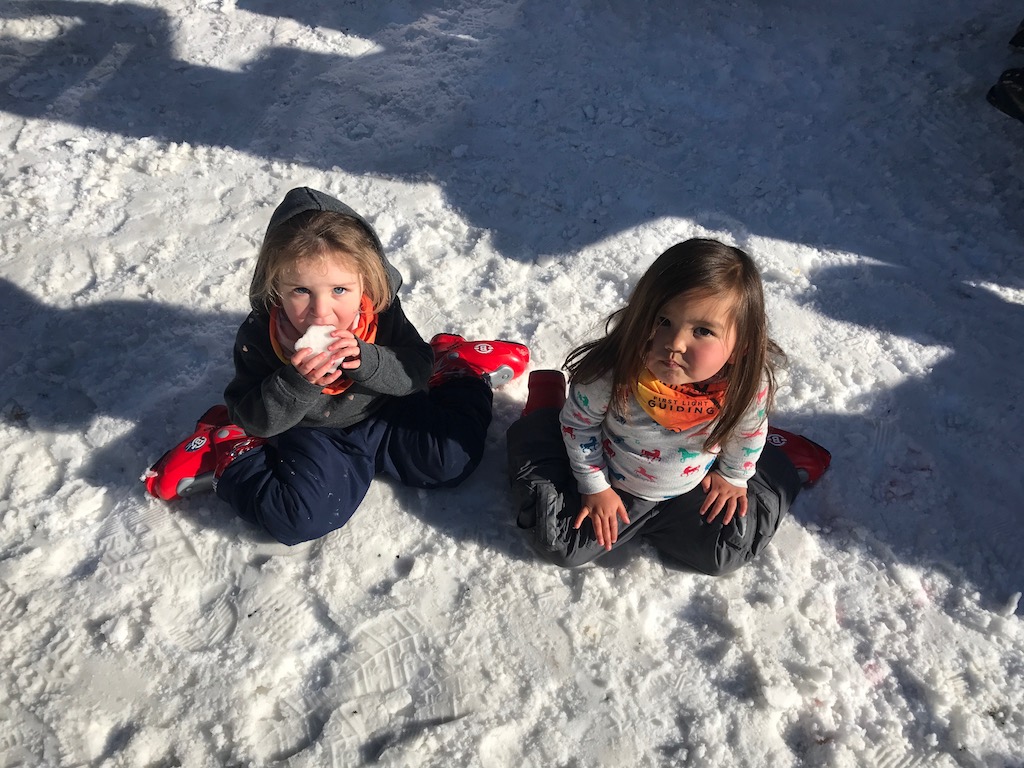
Flexibility and Mobility Work
No wonder little people's knees can do the power wedge all day. Look at that flexibility! Stretching to prevent injury is a controversial topic. Many people swear by it and many others believe that stretching will not help (and in fact, can even increase your chances of injury). However, studies (Harvey et al., 2002) have shown that stretching increases Range Of Motion (ROM) and mobility. Ever run from a cold start or performed some intense exercise without a warmup (as an adult)? Your hamstrings and lower back probably felt a little tender afterwards. We all know someone who has pulled their hamstrings taking part in sport. Most of the time the injury is due to lack of preparation. Sprinting without warming up is a recipe for disaster. Kids can do it without problems, but as adults (who spend most of our time at a desk) we need to be clever with how we approach exercise.
Click here to download Lower Limb Stretches
Exercises for Snow Sports – Preparation and Pre-game
The following exercises are great for preparing your body for the rigours of a day on the slopes. They can also be used on the morning of your day on the slopes to stretch and mobilise joints. A big focus is getting your butt muscles firing, good knee alignment and control of movement.
Squats
Standing with your legs hip width or wider apart. Slowly lower yourself down whilst bending your knees. Keep your back straight and the centre of your patella (kneecaps) falling between your first and second toe for good alignment. Keep your toes relaxed and spread. 15 reps x 3 sets.
Single Leg Squats
This is a tricky exercise to perform completely, but partial squats are still very effective. You’ll spend most of your time in a partial squat anyway. Squatting all the way down helps increase the range of motion.
- Standing on one leg with your arms out in front or palms together
- Bend the free leg and begin squatting on the standing leg. As a guide, the centre of your patella (kneecap) should fall in line between your first and second toe. The free leg should move backwards in a straight line. Don’t let it rotate out to the side.
- Bend the leg more if the toes touch the floor. Watch out for toe scrunching, keep your toes spread and touching the floor.
Squat as far as you can without joint pain. You should only feel warmth in your quads from the effort. 15 reps x 3 sets
Advance: To increase the difficulty, throw your leg out in front and straighten the entire leg. Squat down but don’t let your front leg touch the floor. They call this movement the ‘pistol' and is very challenging but is great for strength, balance, and mobility. Take your time building up to this. 1-3 repetitions.
Squat Jumps
Prepare your knee muscles and quads for bouncing and shock absorption on the ski slope by adding squat jumps to your ski fitness regime.
- Stand with feet shoulder-width apart and hands by your side.
- Squat down to parallel (thighs should be parallel to the floor) and hold your arms straight out in front.
- Spring up to a jump and land on both feet as gently as you can.
The goal is to use your quads and glutes to absorb the shock and to avoid excessive impact on the joints. Training your body to absorb the bumps in this way will not only strengthen the lower legs but will help prevent knee and ankle injuries.
Hamstring Stretches and Strengthening
The hammies are another part of the body often neglected by the general population. But as a snow sports enthusiast, pay particular attention. It could save you from a lot of pain.
Strong hamstrings will also protect your knees.
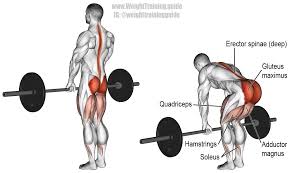
The Stiff-leg or Romanian Deadlift
Sounds intimidating, but it’s a simple enough movement. The key is to perform this exercise with perfect form. If you’re not used to strength training or mobility work, get help from a fitness instructor or personal trainer. We advise getting technique 100% correct to avoid injury and do this without weights to start.
- Standing with feet hip-width apart and hands by your side, bend your knees slightly.
- Hinge forward from the hips. Keep your back straight. It’s very important not to round or over-arch the back. Lower your upper body down until you feel a strong stretch on the hamstrings.
- Engage your core, hamstrings, and glutes to push your torso back to a standing position. To increase the intensity, hold a barbell across your shoulders or hold a barbell or kettlebell with both hands in front of you.
This is a great exercise for strengthening the hamstrings.
Preventing Ski Injuries
Fitness for Skiing
A combination of cardio and weight training is ideal. Pilates is great to condition your core and help with stability as well as work your gluteals. Yoga is a perfect companion exercise regime for skiing as it not only increases strength but it loosens up muscles. Add cardio (elliptical skiing, running, swimming) and you’ll be better able to ski to the level you want.
In the gym, focus on strengthening the quadriceps, glutes, hamstrings, lower back and abs.
Lunges, squats, deadlifts, and Romanian (stiff-leg) deadlifts should be the main exercises if you want a solid foundation for skiing.
If you have time, work the triceps and shoulders as you’ll be using those muscles quite a lot too.
Rest and Recovery
We live in a competitive, productivity-driven world so for many people, skipping a day of skiing during ski holidays, for example, in unthinkable. But rest is very important for preventing injuries. 3 or 4 days of skiing (for non-professionals) is taxing on anyone. An injury is often the result of fatigue and over-training or ‘just one last run'.
If you’ve been going hard on the slopes, take a day off. Use the day for some massage, joint mobilisation, or osteopathy to ensure you are moving and functioning to your optimum.
Common ski injuries
Joint Pain
It is possible to ski a whole day and feel fine. Sometimes you just need a little bit more conditioning, other times it may be your technique, in which case lessons are amazing to tweak your style and alleviate any unnecessary strain your joints.
If you’ve injured yourself or you think you have (more than just delayed onset muscle soreness), let a professional have a look and diagnose the problem. Self-diagnosis can lead to more problems. Pain in one area is often the result of issues in another part. Tightness in the chest area can sometimes be the cause of shoulder pain. Weak gluteals or, tight hamstrings can cause knee pain, back pain, or joint pain in the hips. Osteopaths look at the entire body: Muscles, joints, and nerves. By examining all related areas we can find out the source of your problem rather than just treat your symptoms. This helps us create balance and return your body to full functionality.
Knee Problems
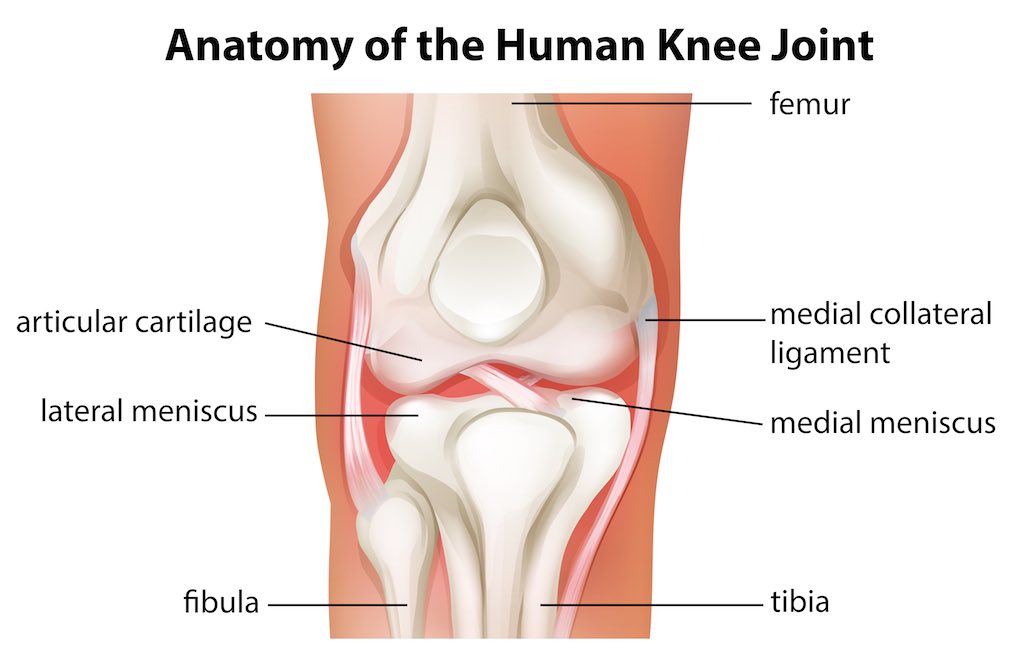
If you’ve got sore knees after skiing the best thing is to rest, ice (20 minutes every 2 hours), and elevate. Then assess 24 hours later (you may need to continue for 48 hours) for the full Acute injury management click to download. If you still experience pain, see an osteopath for more guidance on what to do and treatment to improve your rate of recovery. If you've sprained ligaments in your knees you want to get onto treating this right earlier rather than later. Anatomy of the knee
The knee is composed of three bones. Mainly your femur or thigh bone, your tibia or shin bone, and the fibula, the small bone on the outside of the lower leg. It's held together with four strong ligaments:
- two collateral ligaments (medial & lateral on either side). These stop side-side movement of the knee
- two cruciate ligaments (anterior & posterior). These stop your knees bending too far forward or back (hyper flexing or hyperextending)
Common Ski Injuries
Ligament Sprains
Medial Collateral Ligament (MCL)
Although you have two collateral ligaments. MCL injuries are the most typical experienced by skiers. MCL injuries refer to the inner side knee ligament. If you're a beginner spending all day perfecting your ‘pizza wedge' you'll know where your MCLs are. It's ok though you may have just stretched them a little further than they're used to. Sprains are common though and happen when the knee is twisted or forced. The treatment and recovery process depends on the severity. First-degree sprains can recover with 3-4 weeks rest. Complete ruptures of the ligaments (3rd-degree sprains) which occur when a lot of force goes through the knee may require surgery. Knee braces are the usual supports for MCL injury sufferers.
Signs of a sprain
There are different levels of ligament sprain and how your body responds can tell you how bad the sprain is.
- Grade 1: Tender to touch and occasional sharp pain, +/- minor swelling, no bruising
- Grade 2: Tender to touch, you may have felt a ‘tear' sensation, swelling around the joint and bruising will come up in a day or two.
- Grade 3: Full rupture or tear of the ligament. Surprisingly this one tends not to be painful as there is no attachment to stretch. It will often be accompanied with a small pop sound, swelling and significant bruising.
Anterior Cruciate Ligament (ACL)
ACL tears are also frquent in snow sports. Injury to the ligament which lies deep inside the knee joint often happens when the knee is slightly bent or flexed, and twisted or receives a contact force. Skiing around with bindings that are too tight (make sure you get these set properly before you step into your skis), or getting a ski stuck in soft snow mid-turn is one cause of ACL injuries. Jumping and landing on bent knees is also a common way to damage the ACL in sports. Skiers and snowboarders spend a lot of time absorbing shock with knees bent so there’s always the risk of ACL damage.
Signs of an ACL injury
Often it's the mechanism of injury (slow twist, or a ski binding that doesn't release) that gives it away but sometimes it's the sound or feeling and response of your knee that tells us you've injured your ACL.
- Grade 1: a mild stretch but still supports the knee
- Grade 2: a small tear, but not quite a full rupture. Associated swelling of the knee and a sense of ‘giving way'.
- Grade 3: Full rupture. Often there is a pain, a loud ‘pop' then no pain at all. When you try and stand your leg you can't or it may give way. The knee may swell significantly and suddenly. Often this level of ACL injury results in a triad of ACL rupture, medial meniscus damage and MCL tear or rupture. Often this requires surgical repair however an osteopath can help you reduce swelling, take you through prehab and help refer you to the appropriate person for further care.
Often a grade 1 tear will heal with time and proper treatment and rehabilitation. A grade 2 will likely end your ski season early, but it's important that you give yourself time to recover you can come back stronger the following year. Grade 3 tears often require surgery especially if you plan on returning to skiing.
Meniscus Injuries
Inside the joint of the knee, you'll find two pieces of cartilage on either side. The medial and lateral meniscus. These sit inside the joint of the knee and help the movement and congruency of the joint. Unfortunately, these are also at risk of injury from skiing. The medial meniscus is the most frequently injured, and as mentioned earlier if you've had a grade 3 tear to your ACL you've likely involved the medial collateral ligament and the meniscus.
Symptoms of a meniscus injury:
These can vary depending on severity, but if a small tag of cartilage has lifted you'll often feel a catching sensation on the inside of your knee. You may feel the need to maneouvre your knee around the tag. Sometimes it will smooth itself down and not cause any problems, some days it may flare. If you've done more damage and a loose piece of cartilage comes away you may get intermittent locking and swelling of your knee. In most cases mild meniscus injuries will resolve themself as long as proper hip and knee biomechanics are restored. In some cases they may require referral for MRI imaging and specialist intervention.
For all hip, knee, joint and ligament related pain and injury you can see your osteopath for hands-on treatment, not just of the painful area, but other associated regions to the knee. Often knee injuries are given around six weeks of conservative treatment and rehabilitation before further referral. However in the case of Grade 2/3 tear of your ACL you may require earlier referral to see a specialist. Whether you're planning on surgery or otherwise we can help you understand how best to treat your body and get back to optimum function as soon as possible.
At MetaMed, Many of Osteopaths have been competitive, active, backcountry and recreational skiers (plus one who is training to be a Heli-ski guide) who know how important it is for you to get back into being on the snow. Contact our Wanaka Osteopaths or Osteopaths in Queenstown for your pre and post-season conditioning.

The post Protect Your Knees – Ski Injury Prevention Explained appeared first on MetaMed.
]]>